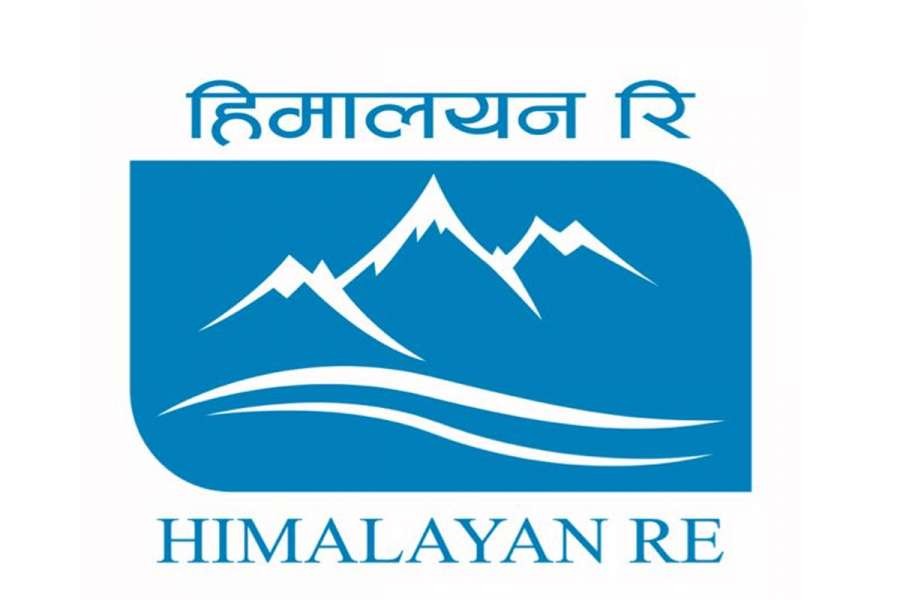Kathmandu: The newly established re-insurer, Himalayan Reinsurance Limited (HRL) has incurred an underwriting loss of Rs 130 million in the third quarter of the current fiscal year. Himalayan Re, promoted by the private sector and favored by the Insurance Board, has incurred Rs 130 million underwriting deficit due to the provisioning of underwriting risk.
The deficit, which stood at Rs 62.2 million in the second quarter, has almost doubled to Rs 130 million in the third quarter.
The credit rating agency, ICRA Nepal has assigned ‘[ICRANP IR] A-‘ to Himalayan Re as an issuer. Such rating indicates an adequate degree of safety regarding timely servicing of financial obligations. Such issuers carry low credit risk. The sign of + (plus) or – (minus) appended to the rating symbol indicates the entity’s relative position within the rating categories concerned.
ICRA Nepal has pointed out that the limited track record, low profit, solvency margin, and moderate retrocession arrangement posed threat to the financial strength of Himalayan Re.
Himalayan Re is in preparation for raising additional capital through Initial Public Offering(IPO) worth Rs. 3 billion. It’s current paid-up capital is only Rs. 7 billion.
Limited track record of operations:
HRL has been operating since July 2021 and therefore has a limited track record. Hence, the company’s ability to scaleup the business, manage a profitable operation and meet the claims and other liabilities over a longer timeframe remains untested. Moderate profitability, supported by investment earnings – HRL’s has reported net profit of ~NPR 196 million during 9M FY2022 largely aided by healthy return on investment despite the underwriting deficit (~NPR 130 million of underwriting deficit, contributed by sizeable unexpired risk reserve).
The company’s higher management expense ratio (on a small scale of operation, albeit on improving trend) and provision for unexpired risk reserve (URR) currently remains a drag to underwriting surplus. Nonetheless, adequate quality of investment with healthy returns have aided the company’s financial performance. The company had investment portfolio of ~NPR 7.3 billion as of mid-April 2022, almost entirely invested in the FDRs/debentures of commercial banks.

Moderate retrocession arrangement:
While HRL’s net retention per risk remains low vis-a-vis sizeable net-worth of the company, its total retrocession coverage (especially catastrophic coverage) remains on a lower side considering the company’s growing portfolio of insured risks, raising rating concerns.
Moreover, HRL is expected to witness a significant uptick in the inflow of fresh business (risks) following the regulation change in May 2022. The need for retrocession arrangement has also increased as the recent circular prohibits the domestic reinsurers to turn down any business coming under the direct cession provision. As such, the ability of the company to secure adequate retrocession arrangements commensurate with the currently insured/expected business volume and manage its risk adequately will remain a key rating sensitivity. Continuation of its retrocession strategy (especially on the total coverage front) could render the company vulnerable to the solvency issues in the event of any major losses/catastrophe. The company’s current Risk and Catastrophic reinsurance coverage have been taken from the consortium of reinsurers led by Hannover Ruck SE – Hannover Re (rated AA superior by AM Best).
Low solvency ratio:
HRL’s solvency margin as of mid-July 2021 stood at 1.4 times, which remains low as the calculations for the solvency is done based on minimum licensing capital of NPR 10 billion while HRL currently has a paid up capital of NPR 7 billion (pending the IPO issuance program). Nonetheless, its ability to maintain comfortable regulatory solvency position through timely conclusion of the IPO process will remain a rating monitorable. However, HRL has been maintaining the mandatory technical reserves and restricted reserves3 as prescribed by the
regulatory authority (Insurance Board of Nepal).
Geographical concentration risk:
Nepal is highly vulnerable to climate changes and natural calamity. Though the company’s business is not restricted to the domestic geography, its business, nonetheless, is likely to remain concentrated within Nepal over the medium term; more so given the expected uptick in the domestic business volume after the recent regulations. This coupled with the need to mandatorily reinsure all risks coming to HRL under direct cession will increase the lumpiness of claims in the event of any risk materialization/catastrophe (unless adequately managed through retrocession).










